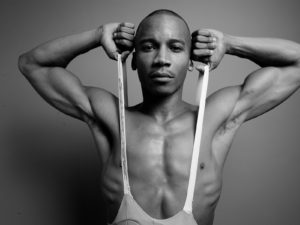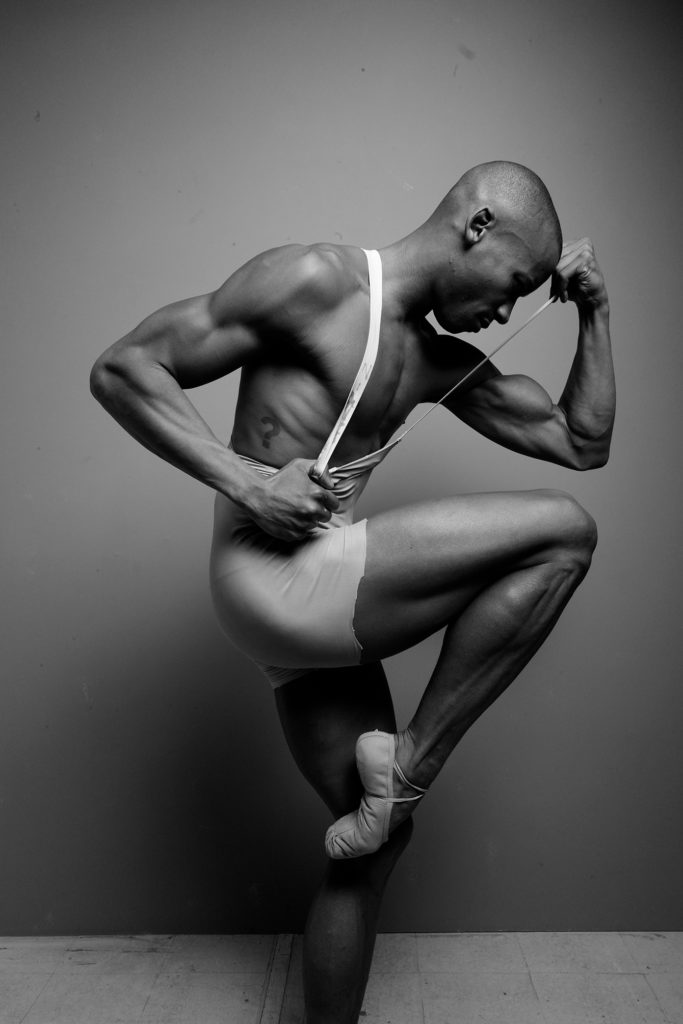
Eric Underwood never intended to be a professional ballet dancer. Growing up, dancing was simply something Underwood did socially in the streets of Washington, D.C., with his sister, and in his family’s living room, alongside his mother, to the classic tunes of Al Green and Marvin Gaye.
But today, he’s known as one of the most renowned ballet performers of our time. And it all came about by the way of a failed acting audition. “I’ve always been a really ambitious person, but I didn’t always have a sense of direction,” Underwood says, reminiscing on his early years of exploring the arts.
Thankfully, his mother, whom he describes as his “rock,” was his guide. She encouraged her son to audition for acting at the Suitland High School Center for Visual and Performing Arts in Maryland. “For her, it was really important to see me do something that I was passionate about, so I could succeed,” the performer explains. “She [gave] me the tools to say, ‘I can try anything.’”
And while the audition didn’t exactly go as they had planned—“I failed miserably on the spot,” he confesses—divine timing was clearly on the now 33-year-old’s side, as it was in that moment he discovered ballet. “I looked across the room and I saw a girl doing the splits. I thought, ‘Why don’t I try that?’” he recalls.
Despite first pursuing ballet as a teen, which is typically considered a late start, Underwood has gone on to gain massive success, dancing for the American Ballet Theatre with barrier-breaking principal ballerina Misty Copeland, and for The Royal Ballet in London in acclaimed productions like Swan Lake and Alice’s Adventures In Wonderland.
During his time working in England, Underwood gained full citizenship in the country he now considers home. It’s also one he loves for its cultural diversity—something he says he wouldn’t trade for anything. “In London, there are people from all different countries, from all different walks of life. It’s been an amazing experience,” he says.
But like most who have risen to the top of their respective fields, success didn’t come without some challenges. While performing in Mississippi, Underwood, along with Copeland, was verbally attacked by a homeless man outside their hotel. “He screamed out, ‘Well, you won’t allow me in, but you’ll let these n—–s in,’” he recounts. Thankfully, Underwood allowed the incident to roll off his back. “Those types of things don’t hugely penetrate me because those are his issues—not my issues,” Underwood asserts. “And having Misty there, I didn’t feel alone. We just had a laugh and moved on. Misty and I have always been there for each other. She’s really like a sister to me.”
The dancer also opened up about a time in his career where he had to regularly apply makeup to his ballet shoes to match his skin—because “flesh tones” didn’t exist for people with deeper hues. But with an innovative mindset, the 6’2” dancer solved the dilemma by teaming up with major shoe manufacturer Bloch to create a line for dancers with darker skin. “I think with ballet, a lot of the intention is to preserve tradition,” Underwood explains. “And sometimes in preserving tradition, we can become quite dated. So we don’t necessarily move forward with the times.”

Though the dance genre may not be too focused on immediate change, Underwood is. In mid-August, he announced via Twitter that he would be leaving The Royal Ballet. However, he has no intention to bow out from the spotlight anytime soon.
Underwood made a smooth transition into fashion, and has already been photographed by the legendary Mario Testino, alongside Kate Moss for Italian Vogue’s February 2016 issue, and most recently modelled in the Givenchy Gentleman fragrance campaign. “I love fashion. I think it’s often the exact opposite of preserving tradition, and that’s really exciting for me,” he says. “It’s looking to the future—for change—and individuality is incredibly celebrated.”
As for the legacy Underwood wishes to leave behind, it’s clear he prefers to be remembered for his work as just an individual, without the unwarranted pressures of his race coming before his professional accolades. “I never noticed I was black until I became a ballet dancer, because in Washington, D.C., everyone else was black, too. So I never thought about it, and I really don’t want to be the person who’s militant and pro-black,” he shares. “You could be purple, blue or yellow, as long as you celebrate yourself,” he continues. “I think there’s such a beauty in just that—without representing a whole race of people. It’s simply not fair—I’m only Eric.”
